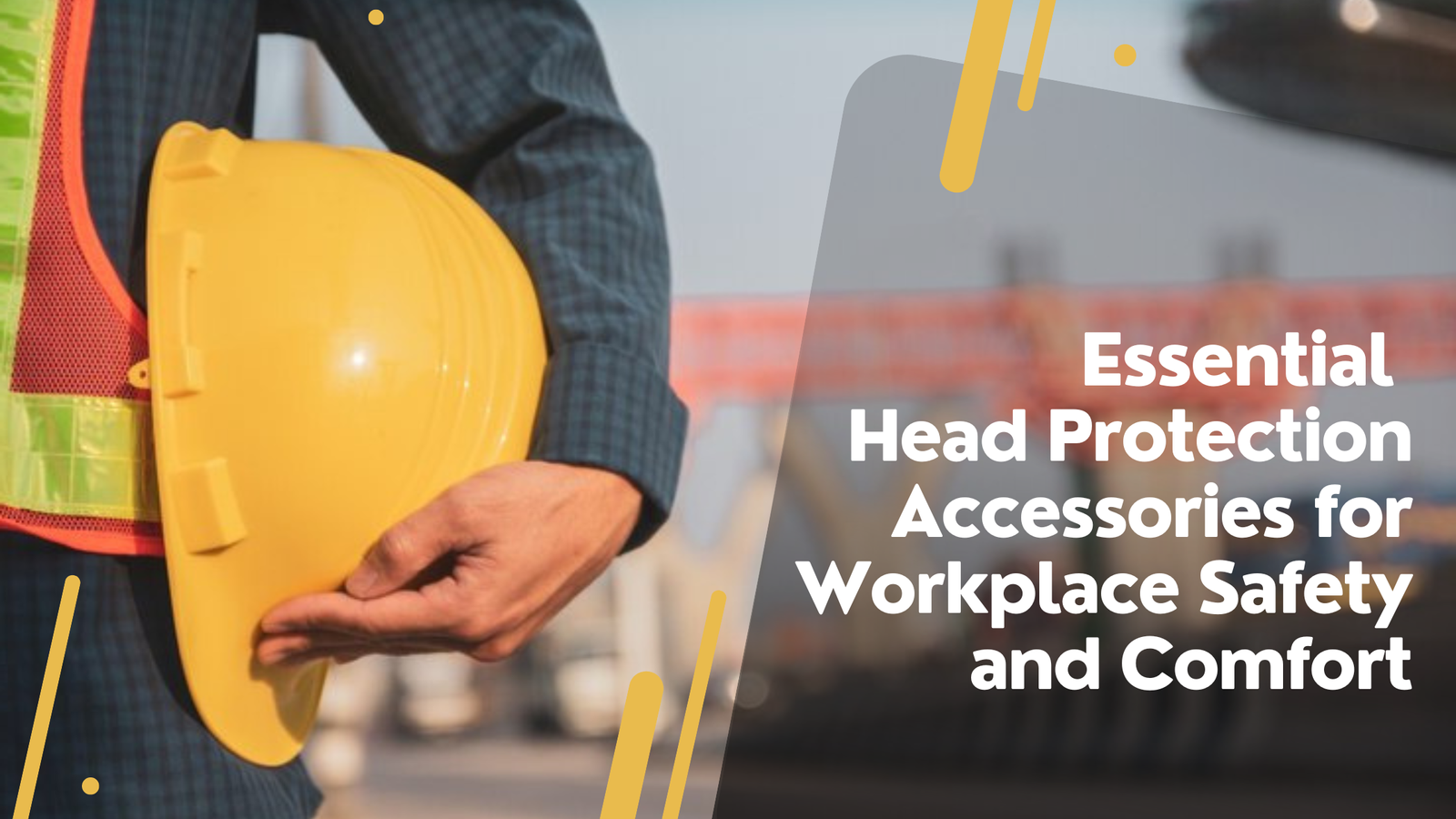Workplace head injuries are a serious issue, accounting for 12% of all reported injuries in Pennsylvania in 2019, which means over 20,000 cases. This shows that employees must wear protective head and face equipment when working to prevent injuries. This article aims to highlight essential head protection accessories and their role in ensuring safety and comfort at work. Readers will learn about different types of head protection, important factors to consider when choosing them, and practical tips for maintaining a safe workplace.
Table of Contents
Understanding the Need for Head Protection
Common Head Injuries in the Workplace
Head injuries can occur in many work environments, often resulting from falls, being struck by falling objects, or impacts with machinery. Common scenarios include slips on wet surfaces, objects falling from heights in construction sites, and accidents involving heavy equipment. These injuries can range from minor bumps to severe traumatic brain injuries (TBIs), which can have lasting effects on a worker’s health.
Consequences of Head Injuries
The consequences of head injuries can be serious and long-lasting. Short-term effects may include concussions, which can lead to headaches, dizziness, and confusion. Long-term, workers may face cognitive impairments, emotional disturbances, and difficulties in daily functioning. Such injuries not only affect the individual’s health but can also lead to decreased productivity and increased healthcare costs for employers. Addressing head injuries promptly and effectively is important for maintaining a safe and productive work environment.
Types of Head Protection Accessories
- Hard Hats
Hard hats are important for protecting workers from head injuries caused by falling objects, bumps, or electrical hazards. They are designed with a tough outer shell that absorbs impact, helping to prevent serious injuries. Many hard hats also offer electrical insulation, which protects against electrical shocks in environments where this is a risk. Additionally, modern hard hats come with ventilation features, allowing air to flow through for comfort during long hours of work. Some models feature attachments for face shields or earmuffs, making them adaptable for various tasks, such as safety helmets for forklift drivers.
- Bump Caps
Bump caps are a lighter alternative to hard hats, designed to protect against minor bumps and scrapes in low-clearance areas. They are often used in warehouses, maintenance work, and other environments where the risk of hitting one’s head is present but the danger from falling objects is minimal. Bump caps provide a comfortable fit and are typically made from soft materials, making them easy to wear for extended periods. While they do not offer the same level of protection as hard hats, they are an effective choice for reducing the risk of minor head injuries.
- Face Shields
Face shields protect the face and eyes from flying debris, chemical splashes, and UV radiation. They are often used in construction, manufacturing, and laboratories. A face shield provides a clear view while safeguarding the wearer from potential hazards. Some face shields can be worn with hard hats or safety goggles for added protection, making them a versatile accessory for various tasks.
- Welding Helmets
Welding helmets are specialized head protection designed for welders. They often feature auto-darkening lenses that adjust to different light levels, protecting the eyes from intense light and sparks. Additionally, a full head protection helmet is made from heat-resistant materials to withstand high temperatures. Many models also include ventilation systems to keep the welder comfortable during long sessions. This combination of features makes welding helmets essential for safety in welding environments.
Factors to Consider When Choosing Head Protection
- Industry and Work Environment
When selecting head protection accessories, it’s important to consider the specific industry and work environment. Different jobs have unique hazards, so the type of head protection needed will vary. For example, construction workers may require hard hats for falling objects, while workers in a warehouse might opt for bump caps to prevent minor injuries.
- Comfort and Fit
Comfort and fit are crucial when choosing head protection. Accessories should fit securely without being too tight, as this encourages consistent use. If workers are uncomfortable, they may be less likely to wear their head protection, increasing the risk of injury.
- Compatibility with Other PPE
Lastly, head safety accessories should be compatible with other personal protective equipment (PPE). For instance, hard hats should work well with safety glasses and respirators to ensure complete protection. Ensuring that all PPE fits together comfortably helps create a safer work environment and encourages proper usage.
Proper Use and Maintenance of Head Protection
- Inspection and Replacement
Regularly inspect head protection accessories for any signs of damage, such as cracks, dents, or worn-out straps. If you notice any issues, replace the accessory immediately to ensure safety. It’s a good idea to check hard hats and other gear at least once a month.
- Cleaning and Storage
To extend the lifespan of head protection, clean accessories regularly with mild soap and water. Avoid harsh chemicals to protect the materials. Head protection must be stored in a cool, dry place away from direct sunlight to prevent degradation.
- Training and Education
Providing training for workers on the proper use and care of head protection accessories is essential. This training should cover how to wear the equipment correctly, when to replace it, and maintenance practices to ensure safety on the job.
Recommendations and Best Practices
- Top Recommended Accessories
Some top-recommended head protection accessories include the MSA V-Gard Hard Hat for its durability and comfort, the Pyramex Bump Cap for low-clearance areas, and the Jackson Safety Welding Helmet for its auto-darkening feature. These accessories are known for their reliability and effectiveness in various work environments.
- Best Practices for Maintaining a Safe Workplace
Creating a workplace culture that prioritizes head safety involves providing adequate resources, encouraging workers to participate in safety discussions, and conducting regular safety audits. Promote open communication about safety concerns and make sure that all employees understand the importance of wearing head protection to reduce the risk of injuries.
Conclusion
Head protection is necessary for maintaining safety and comfort in the workplace. We discussed various types of head protection accessories, including hard hats, bump caps, face shields, and welding helmets, each designed for specific hazards. Regular inspection and proper maintenance of these accessories are essential to improve their effectiveness. Additionally, providing training on their use and care helps promote a culture of safety. Head protection must be chosen right, and by following best practices, employers and workers can significantly reduce the risk of head injuries, creating a safer work environment for everyone.





